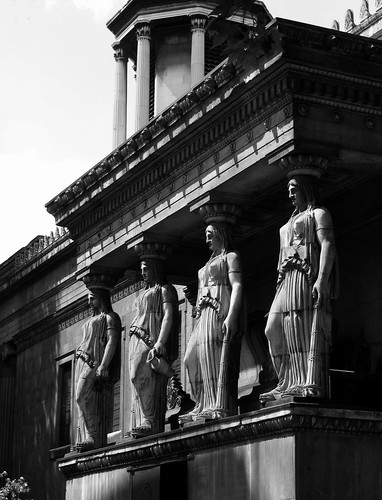In 1834 Henry Inwood published a pamphlet entitled Of the Resources of Design in the Architecture of Greece, Egypt, and other Countries, obtained by the Studies of the Architects of those Countries from Nature, which advanced the theory that the architects of antiquity evolved their forms from a close study of nature, suggesting that that the flutings of Doric columns were taken from reeds, mineral crystallisations or seashells, that Egyptian mummies were wrapped up in imitation of the cocoons of moths and that the image of the sphynx was inspired by a butterfly chrysalis.
I haven't seen the book, but a contemporary review provides long extracts. There's a morbid visionary quality to some of Henry's ideas, which ties in well with the wholly original emphasis on the crypt entrances at St Pancras:
...it would require not much philosophical reflection to observe that the chrysalis of the insect kingdom seemed a state between one existence and another: and, by wishing to apply so beautiful a type to their own being, produced the prototype for converting, by bandages and painted decorations, the human body, as to resemble a pupa or chrysalis; under an impression of its awaiting, in that chrysali state, its period of entering and rising to another existence.
It seems rather a pity that he never attempted the Egyptian style. It's not inconceivable: PF Robinson's Egyptian Hall in Piccadilly was built as early as 1812, but the style never really caught on. The idea of modelling a church on an ancient Egyptian temple isn't really stranger than modelling one on a Greek temple, but I don't know that anyone ever has.
I was going to contrast the practical William with the doomed poetic Henry William. But this hardly stands up; a little poking around in the parliamentary accounts, courtesy of Google Books turns up the fact that Henry William took on his father's post as Clerk of the Works to the improvements to the surroundings of the Palace of Westminster, holding it from around 1811 to at least 1826. Which all sounds very responsible.
